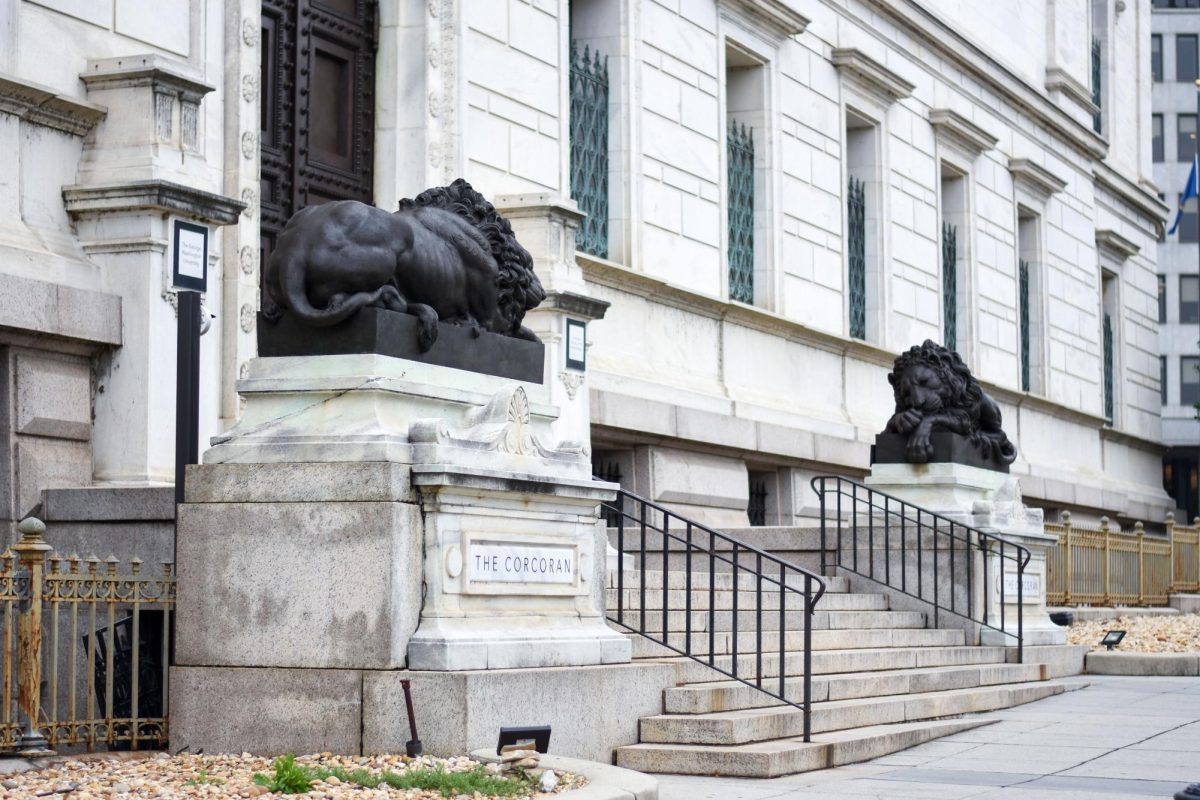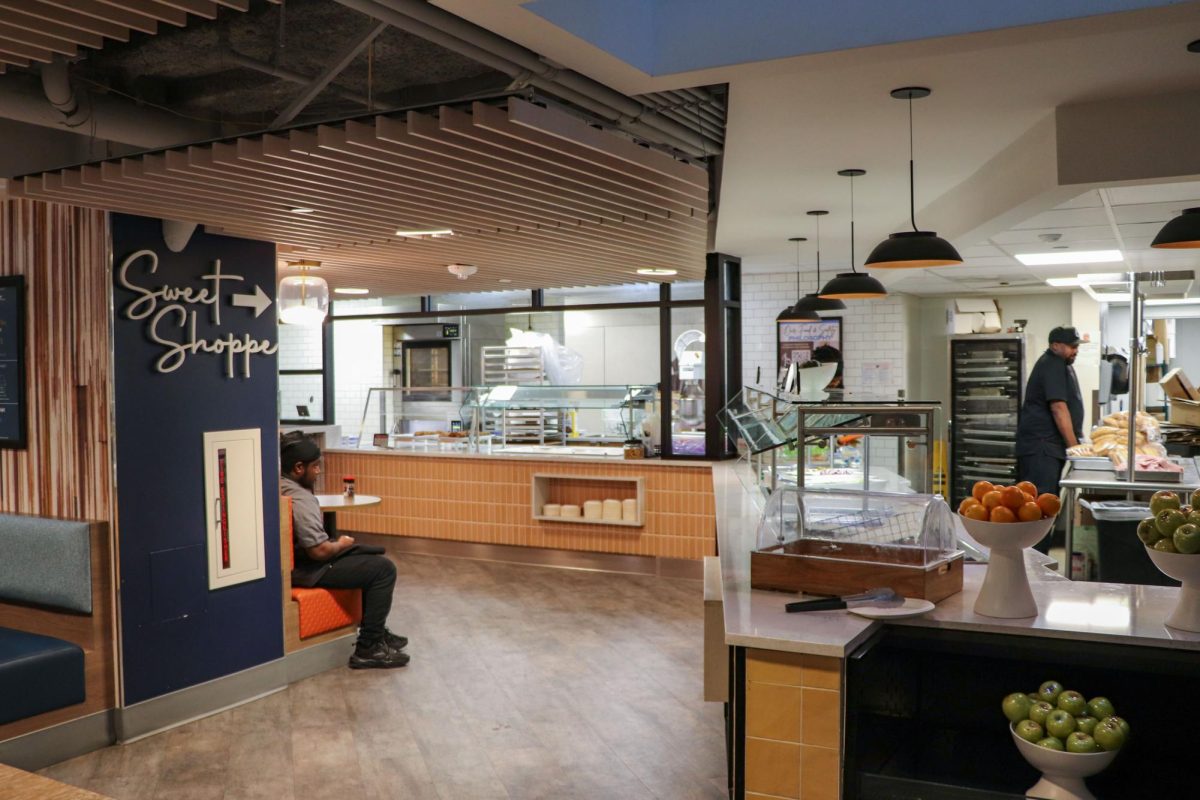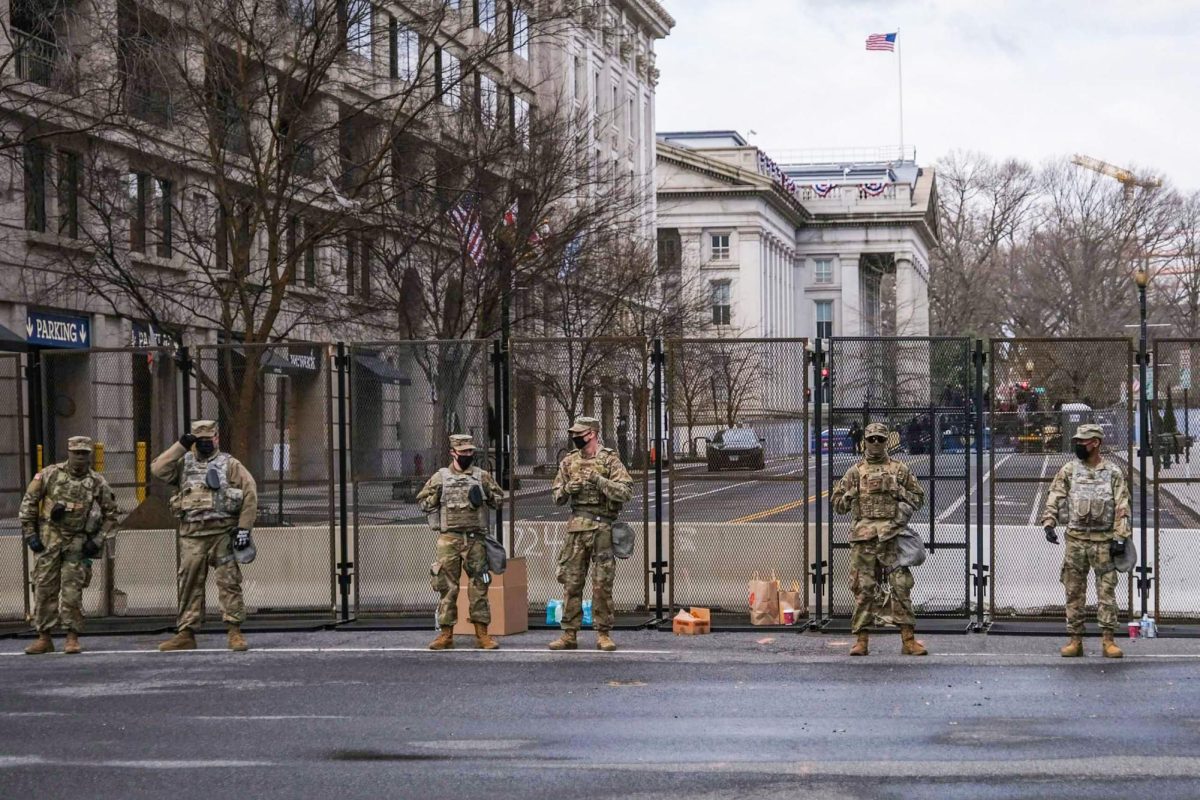Updated: Oct. 2, 2023, at 11:56 a.m.
The Corcoran School of the Arts & Design revised an agreement with the National Gallery of Art last month to turn Corcoran gallery space in the Flagg Building into a hub for collaboration between departments and NGA staff.
The revision launched plans for renovations at the Flagg Building that will turn gallery space on the second floor into a center for interdisciplinary learning opportunities across Corcoran departments. Lauren Onkey, the director of Corcoran, said new leadership at GW and the NGA inspired conversations between the gallery and Corcoran last fall to revise the 2014 agreement that allowed the Columbian College of Arts & Sciences to incorporate Corcoran.
Kaywin Feldman became the new director of the NGA in March 2019, and Lauren Onkey stepped into the role as Corcoran director in July 2021.
“It was kind of an opportunity to say ‘Okay, what do we really want to accomplish for the National Gallery, for the community and for our students?’” Onkey said.
Onkey said she hopes the spaces — which officials are updating with new doors, plaster and flooring — will be ready by fall 2024 for different classes to collaborate on art exhibitions, performances and teaching exercises.
“We could envision, for example, that there may be a class working in one of those galleries or a couple of classes together on a project that lasts for a semester or a year, that results in something public-facing, whether that’s an exhibition or a performance or a workshop,” Onkey said.
The Corcoran Gallery launched in 1869 as a museum for historic and contemporary American art and established the Corcoran School of Art in 1878, which gained membership and accreditation status to the National Association of Schools of Art in 1971.
The Board of Trustees dissolved the museum operations of the Corcoran gallery in 2014. GW and the NGA bought and divided up the assets, leaving the NGA with rights to the Corcoran art collection and giving GW the Flagg Building and Corcoran College of Art & Design, which they renamed the Corcoran School of the Arts & Design.
Corcoran faculty say increased collaboration with the NGA will connect students with D.C. artists and provide professional curatorial experience and interdisciplinary work.
Laura Schiavo, an associate professor and the former program head of Corcoran’s museum studies program, was on the planning committee with Onkey and other Corcoran faculty to revise the agreement. She said “productive conversations” began last fall between a group of roughly 12 members from the NGA and Corcoran to establish guidelines and ideas for collaborative projects like gallery visits, exhibitions and guest speakers in classes.
“We knew that we had parameters. We knew the National Gallery can’t turn over all their staff for this collaboration, and on the flip side, faculty were not going to make everything they do about the National Gallery,” Schiavo said. “So we wanted to set up some sort of structure that the faculty in the Corcoran and staff at the National Gallery could work on.”
Schiavo said her Museum History and Theory class met at the beginning of the semester with curators from the Corcoran Legacy Gallery, a space in the NGA’s west wing where art from the original Corcoran Collection obtained by the NGA in the 2014 agreement are displayed, to learn about the process of selecting works that represent a large museum. She said students will talk more this semester with curators about the Corcoran legacy and develop two-minute audio tours of the gallery.
“For my students, this is a very big time, unusual access opportunity for them to apply what they’re learning about museum history in an actual gallery space and thinking about how you bring those ideas to audiences,” Schiavo said.
Max van Balgooy, an assistant professor of museum studies, said the original 2014 agreement between GW and the NGA was done “so quickly” that both groups struggled to develop specific goals for the partnership. He said this “better” agreement is a result of new management and will lead to more collaboration on projects using the resources both groups obtained from the original agreement.
“It was pretty rough in the first few years, and thankfully, a new, better agreement was developed and signed, and I think a lot of that is due to new people at the helm,” Balgooy said.
Balgooy said the museum studies graduate program went to the National Gallery for a roundtable conversation with gallery staff about NGA exhibitions Friday, followed by a tour of conservation labs and design studios at the gallery.
Balgooy said the new agreement encourages different departments within Corcoran to work together and share resources because they are more aware of ways to collaborate on exhibitions and class projects.
“In my class on community engagement, a graduate class, they are working on an exhibition with a graphic design class of sophomores,” Balgooy said. “Our exhibition design class, led by Laura Schiavo, is working with the exhibition design program as well as the graphic design program.”
Melina Misri, a visiting assistant professor of interior architecture, said students in her Studio 4 class will create mock designs for the NGA’s sculpture garden that they will present to museum staff on-site at the NGA at the end of the semester. She said she worked with Michael Lapthorn, the NGA’s chief of design, to center the project around teaching students about the “client-designer relationship” before they graduate.
“When I was speaking with Michael, I said ‘You’re going to be their client, the NGA is their client,’” Misri said. “So Michael is going to explain to them what some of the site constraints are, what some of the design constraints are.”
Misri said she hopes the project will help students connect with NGA staff and begin thinking about their artistic careers after they graduate because her class is exclusive to first-semester seniors.
“We’re thinking a lot about how we can get them out there, expose them to what’s going on in D.C. and also just to help build on this partnership,” Misri said.
This post was updated to correct the following:
The Hatchet incorrectly reported that Schiavo said the National Gallery can’t turn over all their “stuff” for the collaboration. Schiavo said “staff.” We regret this error.





